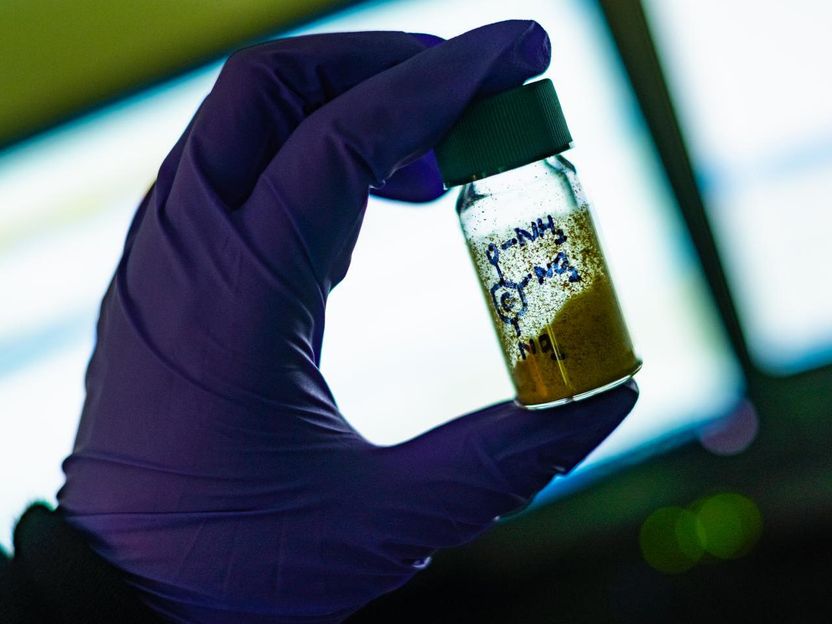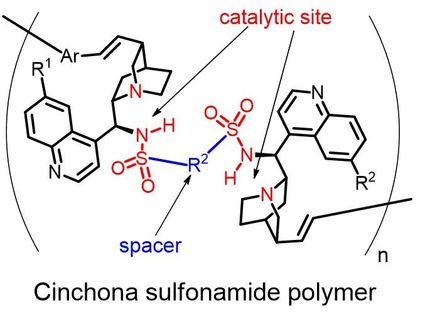Nitrogen gets in the fast lane for chemical synthesis
Chemists discover way to simplify synthesis of valuable precursor for drugs, other compounds
Advertisement
Rice University scientists have given organic chemists a boost with their latest discovery of a one-step method to add nitrogen to compounds for drugs, pesticides, fertilizers and other products.

A one-step method by synthetic organic chemists at Rice University allows nitrogen atoms to be added to precursor compounds used in the design and manufacture of drugs, pesticides, fertilizers and other products.
Jeff Fitlow/Rice University
Rice synthetic organic chemist László Kürti said the method is a major step forward as it quickens and boosts the yield of valuable molecules known as alpha-aminoketones.
Ketones are carbon-based compounds found in nature and important feedstocks for the chemical industry. The primary amino group (NH2) is a functional group present in many important chemical products. It contains one nitrogen atom and two hydrogen atoms. When a ketone is functionalized with a primary amino group at the alpha carbon, it forms a compound called a primary alpha-aminoketone.
"It's a good precursor, because there's no extra functionalization, like an acyl group, on the NH2 and it can then be converted to whatever you want," said Kürti, an associate professor of chemistry. "Previously, this was the issue: People would put nitrogen in there with extra functionality, but the further processing necessary to get to a free NH2 was complicated."
Postdoctoral researcher Zhe Zhou discovered the reaction when he mixed a silyl enol ether and a nitrogen source in a common solvent, hexafluoroisopropanol, at room temperature and found that it mimicked Rubottom oxidation, an established technique to oxidize enol ethers.
"Oxygen is routinely put into the alpha position," Kürti said. "But nitrogen, no. We are the first to show this is possible in a large number of substrates, and it's simple. It turns out that the solvent itself catalyzes the reaction."
Zhou and co-author and postdoctoral researcher Qing-Qing Cheng refined the method and subsequently tested it by making 19 aminoketones, including three synthetic amino acid precursors. "These unnatural amino acids are significant for drug design," Kürti said. "The enzymatic processes in living organisms are not going to attack them, because they don't fit in the enzymes' pockets."
"Before we had this process, it wasn't impossible to make these kinds of structures," Zhou said. "It was just very complicated and took many steps. The goal, generally, is to get them by the most direct method possible."
Earlier synthetic processes by the Kürti lab eliminated the need for transition metal-based catalysts in the manufacture of amines in order to simplify the usual and often inefficient trial-and-error approach involved in making new chemical compounds like drugs. Metal-based catalysts that speed up amination - the introduction of amine groups to an organic molecule -- can also contaminate the product, so the new process avoids them as well.
"Our amination method promises to replace a common three-step process to make alpha-aminoketones, and the yield, comparably, is very good," Zhou said. "In the standard process, each step cuts the yield, so one-step process is still superior even if the yields are identical, because it takes less time and there's less risk of something going wrong.
"The last thing you want is to get eight steps from the beginning and then ruin it on the ninth because the conditions are not selective enough," he said. "Cutting steps is always beneficial in organic synthesis."
"There's a new trend toward late-stage functionalization, where companies with an existing library of compounds can take 100 of them and perform an additional step to make 100 new compounds," he said. "So from an intellectual property perspective, our discovery is a great gift to industry. This really is a gem of a find."



























































